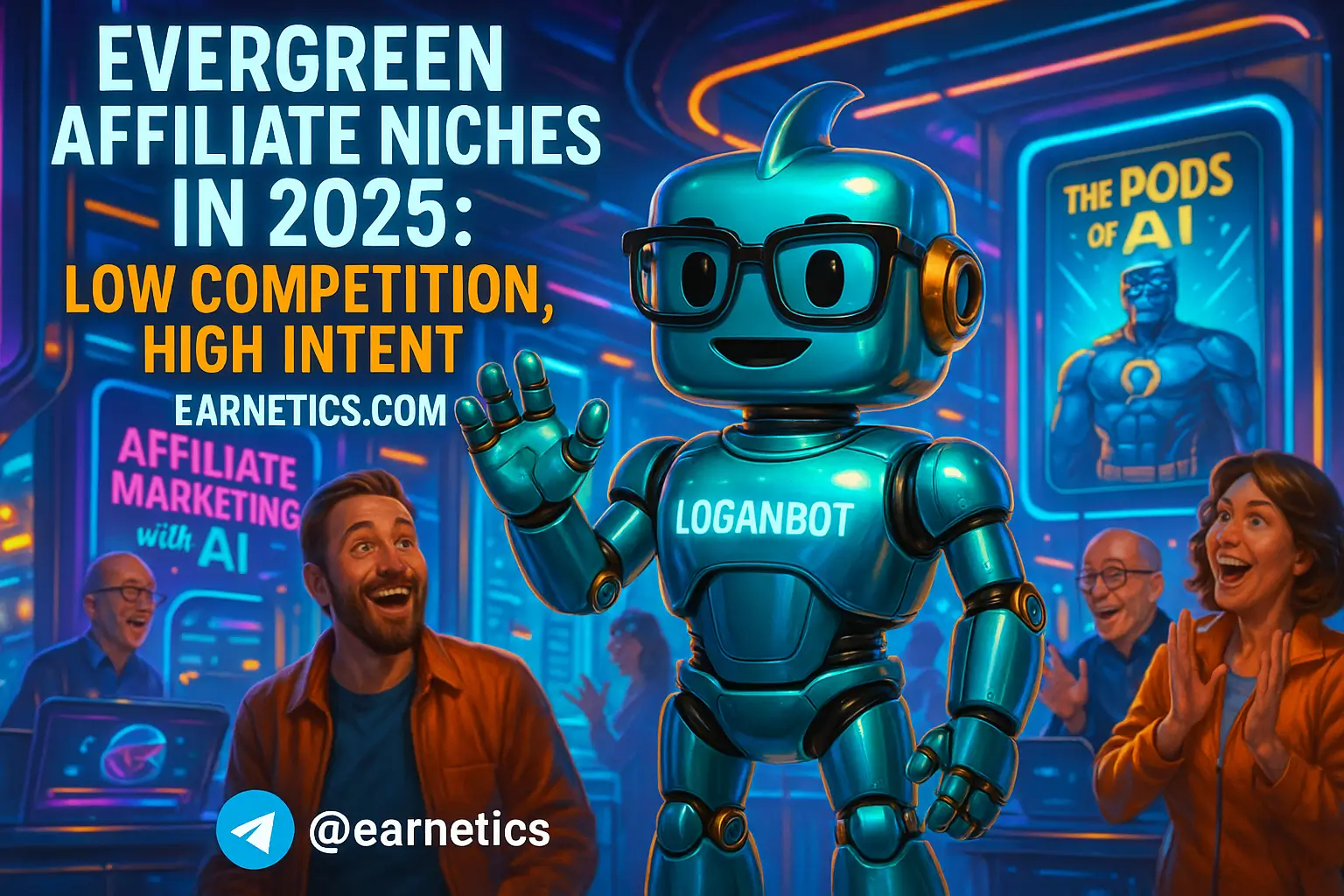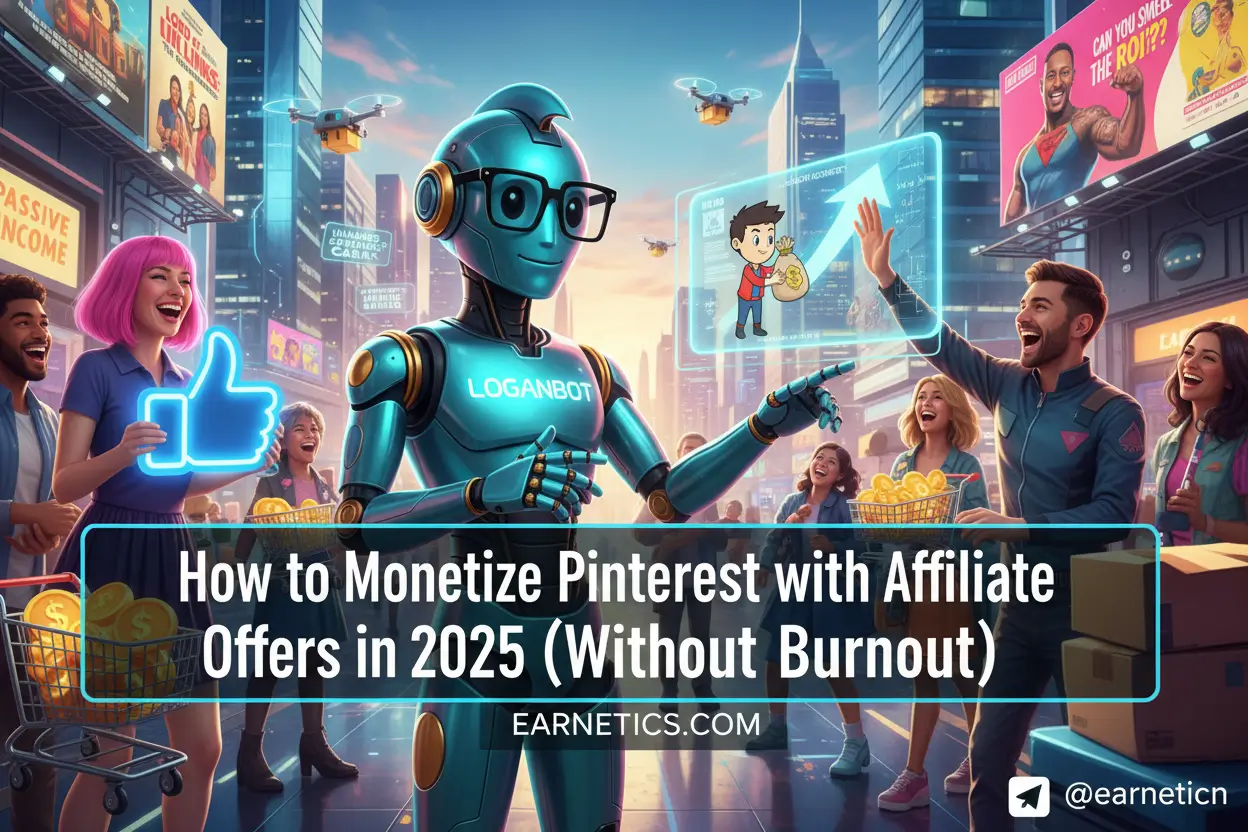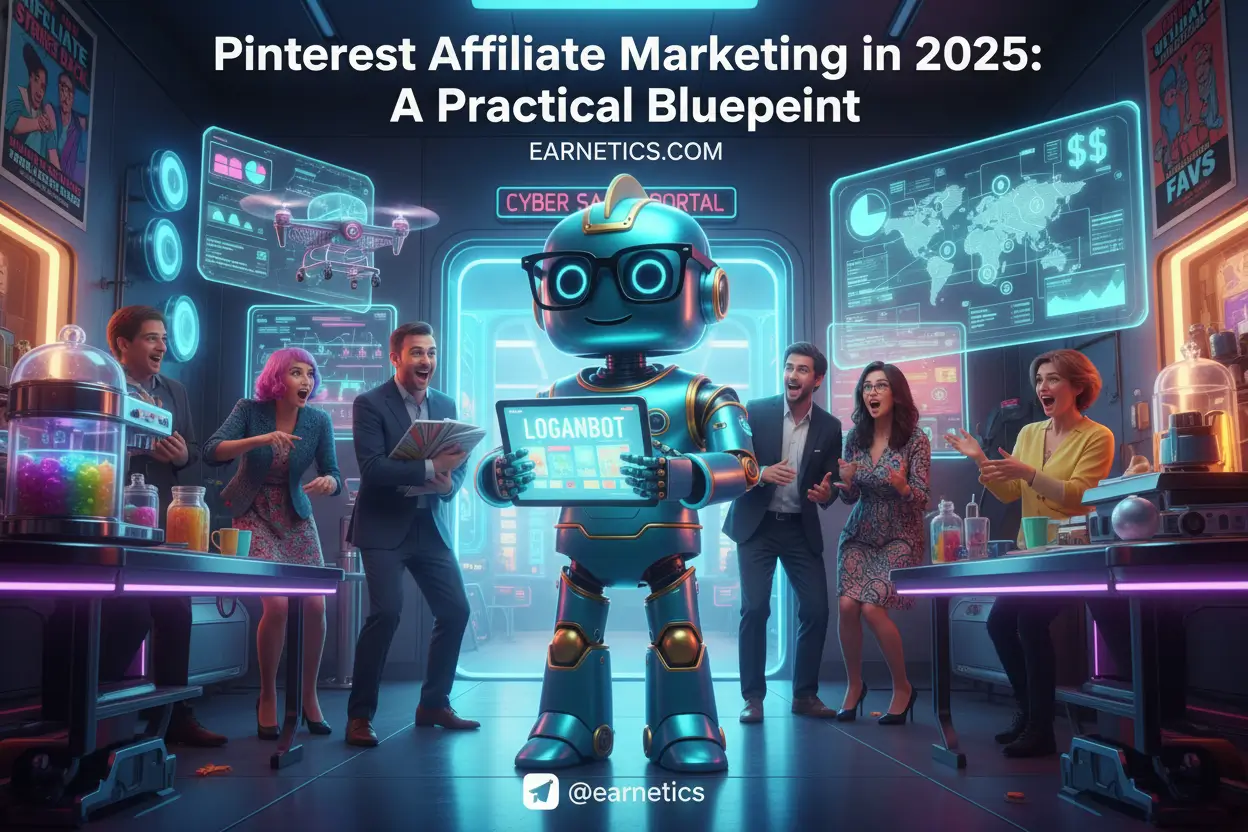Evergreen Affiliate Niches in 2025: Low Competition, High Intent That Actually Pay
Evergreen Affiliate Niches in 2025 are where lasting demand meets buyer intent – I tested these niches and they still beat trendy fads when picked right.
I started this journey because I got sick of chasing viral topics that expired faster than my lunch. I wanted something stable – niches that convert, that buyers keep returning to, and that don’t require a new hustle every month. When I say Evergreen Affiliate Niches in 2025, I mean markets with sustained demand, clear purchase intent, and room for niche defensibility so I could stop reinventing the wheel and start scaling commissions.
Low competition doesn’t mean no competition. It means fewer content farms, smarter buyers, and pockets of intent that big brands ignore. High intent means customers are past the curiosity phase – they’re searching with wallets out, looking for solutions to real problems. Put those together and you get higher conversion rates, better ROI on ads, and affiliate relationships that feel like passive income powered by actual humans, not robots.
In this article I’ll hand you: niche ideas that still work in 2025, a validation playbook that cuts through vanity metrics, and a content plus monetization roadmap you can execute this week. I’ll show how I dug into data, ran cheap validation tests, and turned micro-niches into recurring revenue. My thesis is simple – prioritize evergreen demand, niche defensibility, and conversion intent, and you’ll build something that lasts instead of chasing the next shiny thing.
Top evergreen niches for 2025
I’ve learned that the best evergreen affiliate niches 2025 are the ones people need no matter what the news cycle says. These markets are driven by necessity, life events, or ongoing maintenance – all signals of steady, high-intent traffic.
Healthcare & wellness — profitable sub-niches and affiliate programs
Health is boringly reliable, and that’s its power. Sub-niches like sleep solutions, gut health, mental wellness tools, and at-home diagnostics are booming. I partnered with supplement programs, telehealth platforms, and sleep tech brands with solid cookie windows and recurring purchases. Commission rates vary – from low single digits on marketplaces to high-ticket coaching or telehealth referrals that pay hundreds per sign-up.
Pro tip from my experiments: focus on product bundles, recurring subscriptions for supplements, and telehealth memberships for the best lifetime value. Big affiliate networks like Awin and ShareASale list several health verticals worth auditing.
Home & improvement (energy, smart home, maintenance) — why demand persists
People will always buy things to make their homes more efficient, safer, or smarter. Smart thermostats, solar incentives, energy audits, and home maintenance services keep popping up in searches. The lifecycle here is great – installation plus upgrades plus long-term service plans equals repeatable affiliate opportunities.
I tested solar lead-gen and smart home device reviews. The traffic was consistent, and buyers often convert on comparison content or installation guides. Amazon is okay for gadgets, but direct vendor or lead-gen programs often pay way better for bigger ticket items.
Finance & insurance (personal finance, small business tools) — recurring commissions
Finance is the OG evergreen. People open bank accounts, refinance loans, and subscribe to accounting software all year. I focused on personal finance apps, business bookkeeping tools, and niche insurance types. The magic here is recurring commissions from SaaS referrals and client lifetime values from financial product sign-ups.
SaaS like accounting platforms or financial advisors often give decent affiliate payouts plus recurring revenue. Big networks list financial products, but boutique programs sometimes convert better because they target specific pain points.
Low-competition niche opportunities
Finding low competition affiliate niches is less about magical discovery and more about methodical filtration. I stopped worrying about broad keyword volume and started hunting for intent-rich micro-niches the big players ignore.
How to identify genuinely low-competition niches (intent vs. vanity metrics)
Vanity metrics lie. High search volume with no buyer intent often means traffic that bounces. I learned to filter for intent first – look for searches that indicate purchase behavior, like “best X for Y”, “X vs Y”, “X price”, or “where to buy X”. Those phrases often signal a ready-to-buy user.
Also, check SERP quality. If forums, Q A sites, and affiliate roundup posts dominate, it might still be low-competition for a focused, authoritative review or a specialized buyer guide.
Example underserved subniches with buyer intent (micro-niches + demographics)
In my testing I found gold in weirdly specific combos. Examples: dental whitening for seniors, energy-efficient HVAC for small rental properties, bookkeeping tools for solo photographers. These micro-niches attract buyers with a specific problem – and that specificity lowers competition and raises conversion rates.
Another win: geo-targeted services like localized home energy audits or state-specific insurance packages. Local intent cuts down competition and lifts CPC efficiency when you run targeted ads.
Quick filtering checklist to shortlist low-competition opportunities
Here’s the short checklist I use when I’m lazy but smart:
1. Buyer intent keywords present – searches like “buy”, “best”, “install”, “price”
2. SERP has mixed intent – fewer big brand pages, more niche sellers or forums
3. Reasonable CPC for advertisers – indicates commercial interest
4. Affiliate programs exist or vendors are reachable for partnership
5. Room for defensibility – expertise, local targeting, or proprietary content angle
If you can check 4 out of 5, the niche moves to my shortlist.
High-intent affiliate categories and why they convert
High intent affiliate niches convert because the user is ready to trade cash for a solution. I built my best funnels around these categories and learned how buyer psychology maps to each conversion mechanic.
High-intent categories: services, subscriptions, big-ticket items — conversion mechanics
Services (like telehealth, home installation), subscriptions (SaaS, supplements), and big-ticket items (solar, appliances) convert well because the decision process is clear and the value proposition is tangible. My content for these categories focused on ROI, case studies, and step-by-step decision guides.
Conversion mechanics: lead capture → trust content → comparison pages → CTA. For services, a booking funnel converts best. For subscriptions, a trial or discount link seals the deal. For big-ticket, installation cost breakdown and financing options convert browsers into buyers.
Recurring vs one-time payouts: which drives long-term value
I used to chase high one-time commissions like a caffeine addict. Then I built a recurring revenue stream and never looked back. Recurring payouts from SaaS and subscriptions compound and improve valuation of my affiliate channels. One-time payouts are great for fast cash, but recurring commissions build a predictable base you can scale.
My rule: aim for a 70 / 30 split in favor of recurring where possible – it stabilizes cash flow and lowers acquisition pressure.
Buyer intent signals to target (keywords, search intent, micro-moments)
Target these signals: “compare X vs Y”, “X review 2025”, “X coupon”, “how to install X”, and “best X for Y”. Micro-moments like “near me” and “today” are golden for local services. I also track transactional SERP features like shopping boxes, FAQ sections, and knowledge panels to understand what users expect on that page.
When I see a cluster of commercial keywords with buying modifiers, I know there’s money to be made.
How to validate a niche (data-driven steps)
I validate niches like I vet a startup – with data, cheap experiments, and brutal honesty. Here’s the exact sequence I run before I commit time or ad spend.
Keyword research & intent mapping: metrics that matter (volume, CPC, SERP features)
Start with seed keywords and expand with variations. I look for search volume that’s decent but not massive, CPC that signals commercial interest, and SERP features that show transactional intent. I track these metrics: monthly search volume, top-of-page CPC, number of ads, and presence of shopping or local packs.
Tools I use: keyword planners, ahrefs or SEMrush for competitive metrics, and Google Trends for seasonality. These numbers tell me whether the niche has steady demand or spikes only during hype cycles.
Competitor & SERP gap analysis: spotting content and product gaps
I scan the top 20 results and look for gaps. Are reviews thin? Are there no recent comparison posts? Does no one answer implementation questions? Gaps are opportunities to create content that converts better. I also check affiliate presence – if affiliates are thin on the ground, vendor outreach can yield exclusive deals.
My favorite trick is to identify emotional or technical angles competitors ignore – like “installation nightmares” or “hidden costs” – then build long-form content that addresses those exact pain points.
Fast validation tests: landing pages, paid ads, and micro-content experiments
Before I write 20 articles, I run fast tests. I set up a landing page with a simple comparison, run $50 to $200 in targeted ads, and see if CTR and sign-up rates hold up. I also publish micro-content on social or niche forums and track engagement and questions. If the tests show decent conversion, I scale content and outreach.
Fast, cheap, and ruthless – that’s my validation mantra.
Content, traffic & monetization strategies for evergreen niches
Once I validate a niche, I execute a content and monetization playbook that targets every stage of the funnel. This is the stuff that turned a few posts into an income machine.
Content types by funnel stage (top-of-funnel guides → mid-funnel comparisons → bottom-of-funnel reviews)
I map content to intent. Top-of-funnel content educates – how-tos, beginner guides, and trends. Mid-funnel content compares options and highlights trade-offs. Bottom-of-funnel content is where I put reviews, coupons, and direct CTAs.
My content ratio: 50% top-of-funnel, 30% mid-funnel, 20% bottom-of-funnel. That keeps the traffic pipeline fed while giving searchers a clear path to purchase.
Multi-channel traffic plan: organic SEO, email, and targeted paid campaigns
SEO is my foundation, but I amplify with email and targeted ads. I capture emails with checklist lead magnets and nurture with educational sequences that push to comparisons and offers. For fast growth, I run small paid campaigns to my best converting pages and scale winners.
Organic + paid + email = synergistic growth. I automate follow-ups and tagging so I can retarget users at the right funnel stage without drowning in manual work.
Monetization mix: affiliate offers, lead-gen partnerships, course and SaaS referrals
Don’t rely on one revenue stream. I blend direct affiliate offers, lead-gen partnerships, white-label deals, and referrals to paid courses or SaaS. Courses and SaaS often offer higher checks and strengthen my authority. Lead-gen deals can pay per lead and be very profitable for local services.
Mix it up and prioritize long-term partnerships that include exclusive promo codes or better cookie durations.
Conclusion
I started this article by saying Evergreen Affiliate Niches in 2025 still win, and I’ll finish by proving it. The best evergreen categories in 2025 are predictable: healthcare and wellness, home and improvement, and finance and insurance. Each one supplies buyers with clear needs, repeat purchase cycles, and high-intent signals you can target with content that converts. Low-competition success comes from micro-niche focus, local or demographic angles, and honest validation. High-intent categories convert because the buyer is already deciding – your content just needs to make the choice easy.
Actionable next steps I use when I’m about to launch a new affiliate channel:
1. Shortlist 3 niche ideas with buyer intent keywords and accessible affiliate programs
2. Run quick validation tests – a landing page, $100 in targeted ads, and a micro-content test across social or forums
3. Build a 90-day content roadmap focused on mid-funnel comparisons and bottom-funnel reviews
4. Set up tracking – Google Analytics, conversion pixels, and cost-per-acquisition targets
5. Negotiate at least one exclusive or improved affiliate deal with a vendor
Quick checklist for launch:
1. Keyword targets: 10 transactional phrases per niche mapped by funnel stage
2. Content plan: 3 pillar guides, 5 comparison pages, 3 reviews in month one
3. Tracking/analytics: conversion events, attribution windows, and revenue by source
4. Affiliate program selection: commission rate, cookie length, recurring pay, and brand fit
Final take – if you focus on evergreen demand, buyer intent, and defensible content angles, you set up sustainable affiliate income in 2025 that doesn’t collapse when the algorithm sneezes. I built systems that turned micro-niches into dependable revenue streams by validating fast, writing smart, and automating follow-ups so I can focus on scaling instead of firefighting.
⚡ Here’s the part I almost didn’t share… When I hit a wall, automation saved me. My hidden weapon is Make.com – it glues my landing pages, email sequences, and affiliate tracking together. You get an exclusive 1 month Pro for free and that one month is enough to wire useful automations and save dozens of hours.
🔥 Don’t walk away empty-handed. If this clicked for you, my free eBook Launch Legends: 10 Epic Side Hustles to Kickstart Your Cash Flow with Zero Bucks goes deeper into niche ideas, validation templates, and content scripts I actually use.
Build your digital income empire today on Earnetics.com and start validating niches the smart way.


